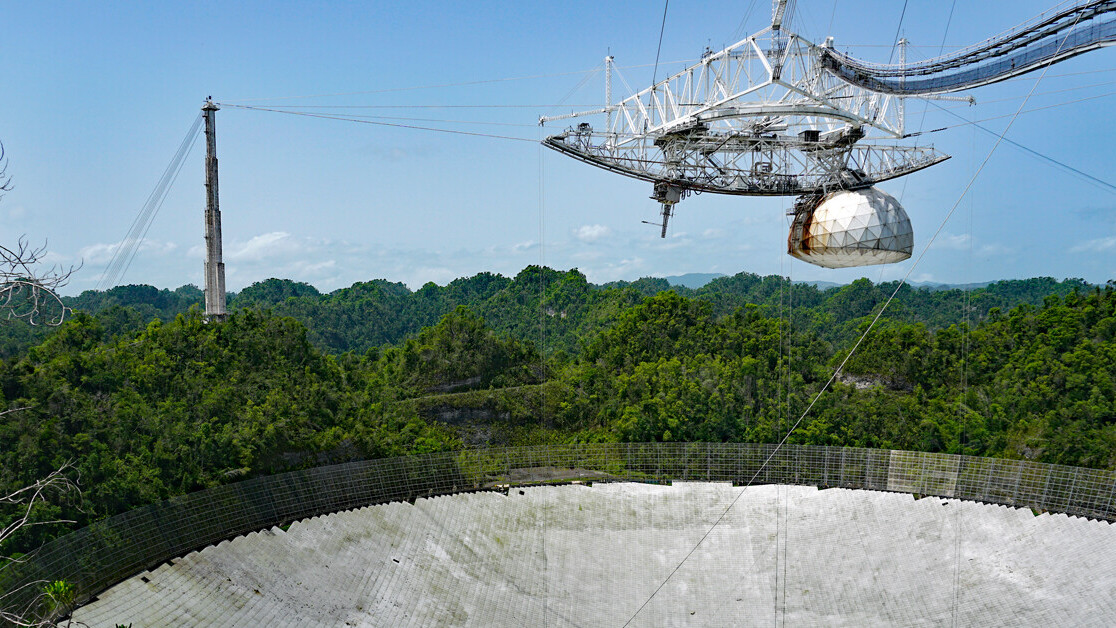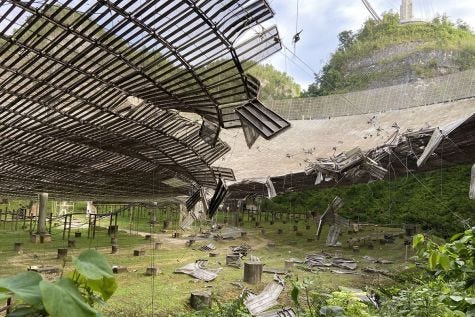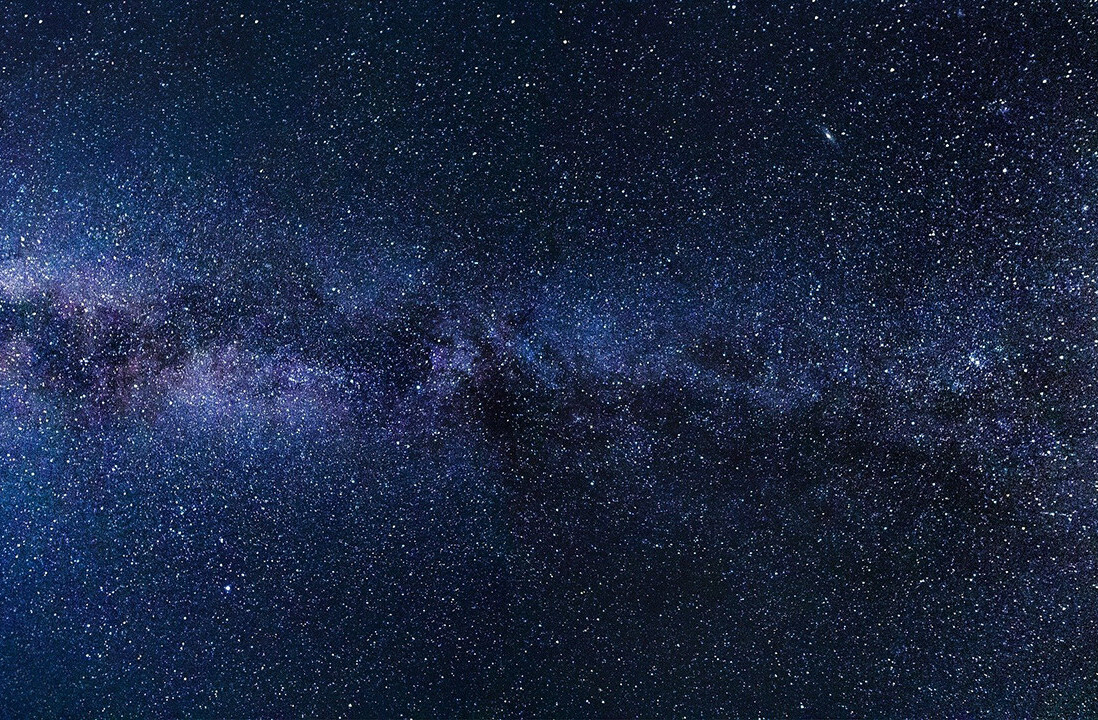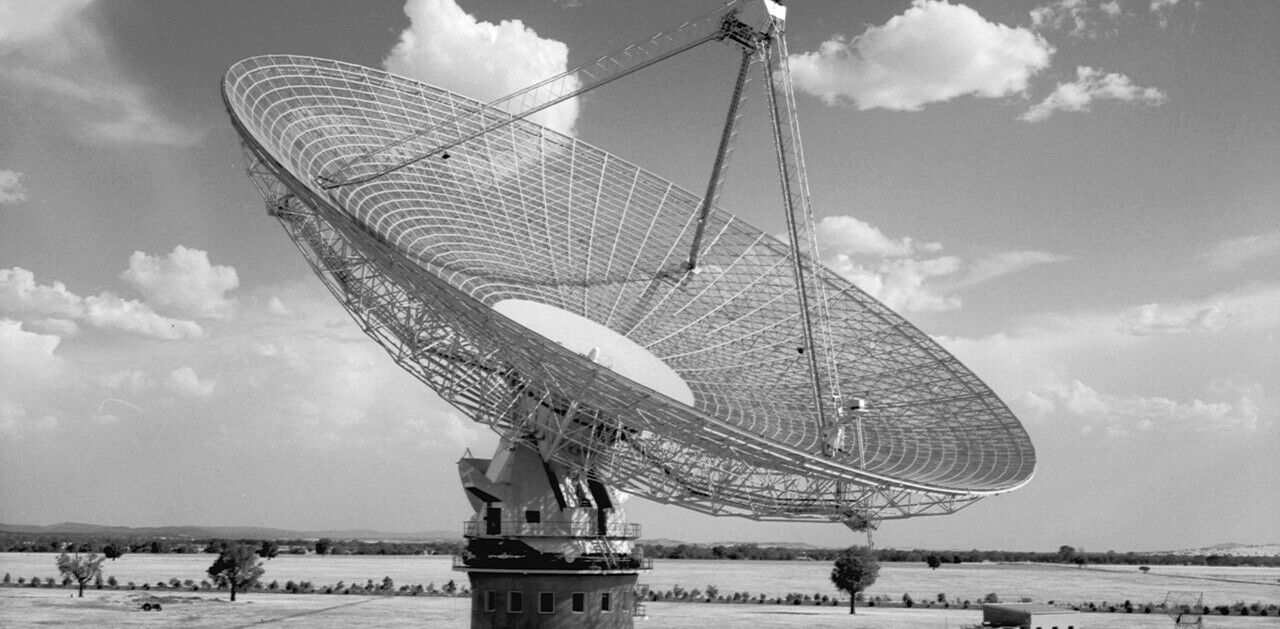Now, the Arecibo Observatory, wracked by a series of unfortunate events, is due to be demolished, ending its 57-year lifespan discovering the Universe.
Look around you, all you see are… well, quite a lot, actually
The brainchild of Cornell University Physicist William Edwin Gordon, construction of the 305-meter (1,000-foot) dish began in a natural karst sinkhole in Puerto Rico in 1960. Development of the revolutionary telescope continued for three years before work was completed.
The Arecibo Telescope was constructed with a spherical dish, as opposed to the parabolic shape employed by most radio (and many optical) telescopes. This was because the dish itself was too large to move, so astronomers pointed at select targets by moving the massive receiver strung high above the dish.
The 900-ton platform was suspended 150 meters (almost 500 feet) above the behemoth reflector by a system of 18 cables.
With its dish originally covered in a wire mesh, the telescope was originally limited to frequencies below (roughly) 500 MHz. This metallic netting was replaced by 40,000 adjustable aluminum panels, raising the limit of observations to around 5,000 megahertz.
The Arecibo telescope was capable of conducting radio astronomy, as well as examining the ionosphere of Earth, near the boundary between the upper atmosphere and space.
Just months after seeing first light, astronomers at Arecibo made a major discovery — they found Mercury rotates every 59 days, not 88 days as previously believed.
Observations of the Crab Nebula conducted in 1968 provided the first concrete evidence of the existence of neutron stars.
Six years later, the discovery of the first binary pulsar system, discovered at Arecibo, led to the 1993 Noble Prize in Physics for researchers Russell Hulse and Joseph Taylor.
This same year — 1974 — marks the only time our civilization has sent a powerful, dedicated signal to extraterrestrial civilizations, offering a friendly hello to any alien astronomers who may see the message.
Directed toward the star cluster M-13, this message to unknown intelligences will arrive at its target in roughly 25,000 years. Included in this 23×73 pixel map are crude stick figures, numbers, chemical formulas, and a simple rendition of the Arecibo Telescope.
The first-millisecond pulsar ever seen by astronomers was found by astronomers at Arecibo, rotating 642 times a second.
In 1989, the same year the Berlin Wall fell and the World Wide Web (and The Simpsons!) were born, Arecibo imaged an asteroid for the first time in history. Also that year, Arecibo was used to find the pulsar PSR B1257+12, which led to the discovery of the first planets seen around alien stars.
Five years later, astronomers used the Arecibo Telescope to map ice on Mercury.
In 1999, Arecibo began to collecting data from the SETI@Home project, a networking system using home computers around the globe to search for signs of extraterrestrial life. Using a similar network — Einstein@Home, amateur computers found 20 pulsars in data from Arecibo.
The facility was visited by thousands of school children each year, providing them an opportunity to learn about astronomy while visiting one of the greatest observatories in the world.
OK, 2020 — just stop it already.
As might seem appropriate, at the start of 2020, astronomers using Arecibo found an asteroid resembling the head of a person wearing a face mask. The mighty telescope, a victim of multiple disasters, would finally be pushed to the edge and beyond. Before the year was over, the telescope would be dead.
In July 2016, the Five hundred meter Aperture Spherical Telescope (FAST) in China came online, and Arecibo lost its title of the largest single-aperture telescope in the world.
Hurricane Maria struck the dish in September 2017, destroying 30 of the facility’s 38,000 aluminum panels. Although relatively minor, this was the first in a series of unfortunate events for Arecibo.
Hurricanes damaged the telescope throughout 2020, and a pair of cable breaks doomed the facility. The first of these, in August 2020, resulted when a cable slipped from its socket, creating a 30 meter (100-foot) gash in the mammoth dish, as well as damage to the platform leading to the dome. The facility was shut down while damage was assessed.
On November 7, a second cable broke just prior to repairs being conducted to the historic telescope. This second cable snapped unexpectedly, destroying a part of the dome itself.
“The second broken cable was unexpected. Engineering assessments following the auxiliary cable failure indicated that the structure was stable… Engineers subsequently found the 3-inch main cable snapped at about 60 percent of what should have been its minimum breaking strength during a period of calm weather, raising the possibility of other cables being weaker than expected. Subsequent inspections via drones of the other cables revealed new wire breaks on some main cables,” the NSF reports.
These events caused the collapse of large portions of the dish. Repairs were hampered by the pandemic raging around the world. Three engineering firms were hired to assess the damage, along with the possibility of resuming operations at the facility.
“Following engineering assessments concluding damage to Arecibo Observatory cannot be addressed without endangering the lives and safety of crew and staff, NSF plans to decommission the 305-meter telescope,” the National Science Foundation tweeted.
The U.S. Army of Engineers determined that the remaining cables were in danger of snapping, resulting in the collapse of the telescope, endangering nearby structures, and are beyond repair.
The loss of any of these ties could result in the collapse of large portions of the dish, potentially killing or injuring anyone standing nearby. The collapse of the Arecibo telescope is now inevitable.
On November 19, the National Science Foundation, which oversees the observatory, announced the evacuation, and demolition, of what remains of the iconic telescope.
“The decommissioning process involves developing a technical execution plan and ensuring compliance with a series of legal, environmental, safety and cultural requirements over the coming weeks… When all necessary preparations have been made, the telescope would be subject to a controlled disassembly,” the NSF reports.
The NSF hopes to reopen parts of the site, including the LIDAR facility, the Culebra research substation analyzing cloud cover, and the visitor center.
The Arecibo Telescope has had a long and fruitful life, bringing science forward with every year of its nearly six decades of serving the people of Earth.
In addition to Contact, the Arecibo telescope is remembered in pop culture as a setting for the X-Files, and the classic James Bond film, GoldenEye.
Its time to say goodbye to our beloved Arecibo, but this groundbreaking instrument will be forever remembered in our hearts and our minds, as well as in the crude pixelated image of the telescope, traveling forever through the stars.
This article was originally published on The Cosmic Companion by James Maynard, founder and publisher of The Cosmic Companion. He is a New England native turned desert rat in Tucson, where he lives with his lovely wife, Nicole, and Max the Cat. You can read this original piece here.
Astronomy News with The Cosmic Companion is also available as a weekly podcast, carried on all major podcast providers. Tune in every Tuesday for updates on the latest astronomy news, and interviews with astronomers and other researchers working to uncover the nature of the Universe.
Get the TNW newsletter
Get the most important tech news in your inbox each week.








